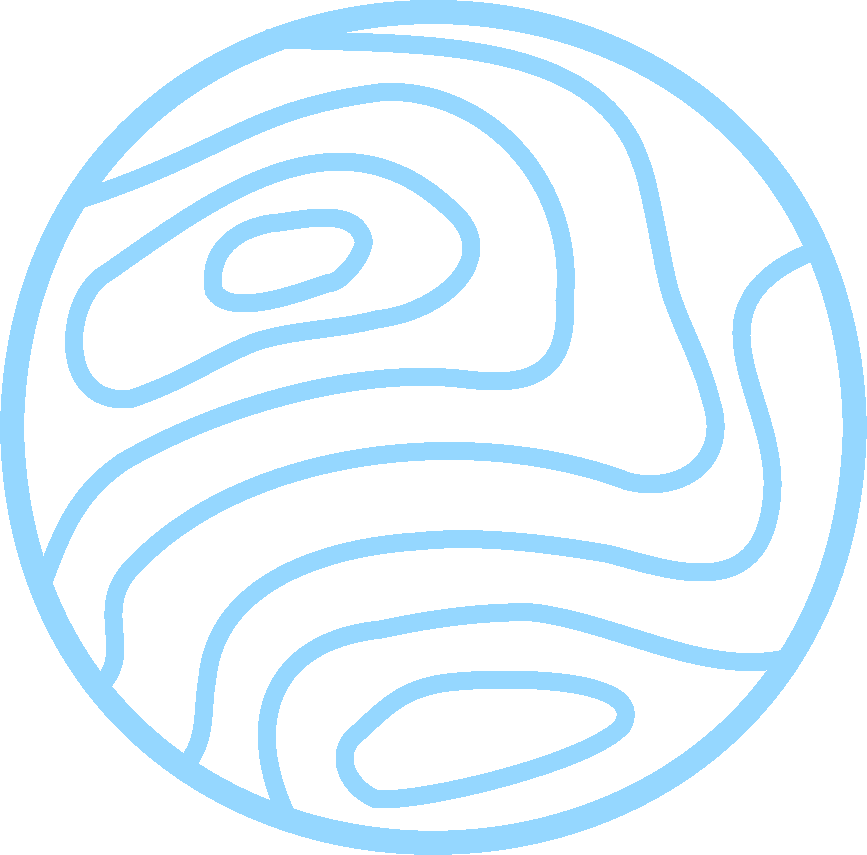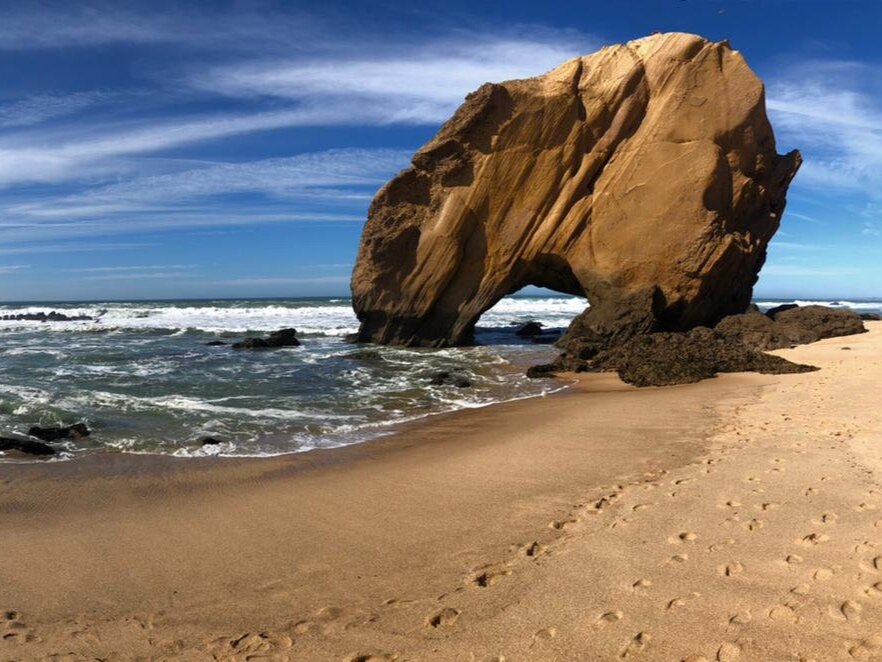SALT TECTONICs and Halokinetic sequences concepts in the ONSHORE LUSITANIAN BASIN (portugal)
Implication of salt-related deformation and sedimentation processes on reservoir properties and hydrocarbon accumulations, geothermal potential and CCUS on upturned salt diapir flanks
(On-demand field-based training course)
Introduction
This is a 4 days field-based course focused on the main aspects of salt tectonics and its interplay with sedimentary processes. Participants will observe in the field structural and sedimentary features that are usually only visible on seismic and/or drill cores. The outcrops will be compared with seismic examples from Lusitanian and Peniche Basins, perfect to understand tectono-sedimentary structures at different scales, while allowing to discern sub-seismic scale features that are only visible on outcrop.
Participants will understand the implications of salt-related deformation and halokinetic sedimentation processes on reservoir properties and hydrocarbon accumulations on upturned salt diapir flanks.
The onshore Lusitanian Basin has world class exposures that are ideal to visualize some of the problems that professionals deal with during exploration, appraisal and development phases of hydrocarbon accumulations and CCUS in a salt basin.
This field course is based on a research undertaken by the instructors over the last 3 years. Participants will understand salt tectonics concepts while observing world class field examples, which include visiting the deepest evaporite in Portugal quarry and several other outcrops of salt structures in Central Portugal.
-
Physical requirements: Easy to moderate depending on the season. Some field localities may require walking approximately 2 km on easy terrain. Short walks (approx. 100m) over large boulders along the beach may be required.
Duration: 4 days
Type: Classroom (0.5 days) Field ( 3,5 days)
Area: Central Coastal Portugal
Target audience: Post-grad geology students, geologists, field geologists, oil and gas professionals, CCUS professionals, structural geologists, reservoir geologist and engineers, geology engineers, geothermal geoscientist, geophysicists and teachers.
Prerequisites: Advanced geological principles, basic knowledge in salt tectonics, basic geophysical principles
What’s Included: Transportation, meals, accommodation in 4 stars hotel*, digital field guidebook, personal insurance and Geo Logica t-shirt.
Number of participant: 10 to 15
Course Cost: from 3250€ (excl. tax) depending on number of participants*
-
Ian Davison: Visiting Professor at the Department of Earth Sciences, Royal Holloway, University of London and former Founder and Director of the Earthmoves Ltd. A reference in South Atlantic geology. Ian is one of the most prominent salt tectonics experts in the world with more than 100 publications in the most relevant scientific journals.
Pedro Barreto: Founder of Geo Logica, graduated in Geology from University of Lisbon and has a Master’s degree in Tectonics from Royal Holloway, University of London. Former Senior structural geologist at CGG NPA Satellite Mapping where developed extensive field work in Europe and Africa. Former Senior New Ventures and Exploration Geologist at Partex O&G (Gulbenkian Foundation) where it was Lead Project Geologist for Portuguese exploration. Expert in structural geology from rifting to compressional settings with geological research in Portugal, North Africa, Middle East, East Africa, Brazil and Angola. Co- Author of several publications and presentations on rifting and salt-tectonics.
Penedo do Guincho submarine canyon cutting diapir flank, Santa Cruz, Portugal
Western limit of Caldas da Rainha-Óbidos Diapir at São Martinho do Porto, Portugal.
Course Objectives
-
-Evaporitic sequences
-Halokinesis: salt walls and diapirs
-Internal structure and deformation of diapirs
-
-Understand Concepts of halokinetic sedimentation;
-Deformation of adjacent rocks produced by passive diapirism;
-Recognise onlaps onto growing salt diapirs;
-Type of unconformities: J-hook, Low angle wedge and high-angle flap-onlap unconformities;
-Erosion and reworking of diapiric crest and flanks;
-Carbonate and clastic deposition and structures adjacent to salt diapir;
-Dissolution processes and its effects on sedimentation above diapirs;
-Geometry and trapping mechanisms of hydrocarbon on soapier flanks;
-
-Distinction between oil seeps and hydrocarbon accumulation;
-Example of exhumed biodegraded oil fields;
-Concepts of lateral and top seals, trap and reservoir;
-Concepts of gross rock volume (GRV), netpay, fill to spill;
-Geometry and trapping mechanisms of hydrocarbons on soapier flanks;
-Implications of salt bodies in thermal gradient of diapir flanks
Highly deformed gypsum layers at Sogerela Quarry inside Caldas Da Rainha Obidos- Diapir, Óbidos, Portugal.
Western flank of Caldas da Rainha-Óbidos diapir at São Martinho do Porto; Portugal.
Course Description
-
Salt tectonics is one of the most fascinating subjects in geology as it influences and plays an extremely important role in many different geoscience and geoengineering disciplines. Since Trusheim in 1957 firstly used the term Halokinesis, there have been many advances in this peculiar field of geology. Until the turn of the century the majority of the work was mainly focused in the internal development of salt structures and their geometries. Yet, after Giles & Lawton work published in 2002 the focus shifted into the understanding of the geometric development of sedimentary sequences associated with the rising of diapirs, i.e., the halokinetic sequences. This allowed many authors and researchers go back and revise and/or improve the knowledge of previously known and well-described salt provinces in the light of recently discovered concepts.
This course is based on salt tectonics in the onshore Lusitanian Basin in the light new halokinetic concepts. This basin presents several large outcropping salt diapirs or “les aires Diapiriques ou Aires Typhoniques” firstly described by Choffat in 1880. Since then many authors have worked and proposed different mechanisms and explanations for the outcropping diapirs exposed in this part of Central Portugal.
The course main objective is to review the main salt tectonic concepts that have a major relevance for professionals working in salt basins. To visualise and understand these concepts live in the field will provide participants with another dimension of problematics that usually can only be imagined or visualised on seismic datasets or drill cores.
-
On the first day participants will on work along a cross-section of Santa Cruz Diapir. This includes observing both internal composition and deformation of the diapir as well as the external structuring of sedimentary sequence adjacent to it. The diapir flanks present features such as granulation seams, faults and natural hydrocarbon accumulations, as well as different types of halokinetic unconformities with varying dip, from J-hook to a new type firstly described here in Santa Cruz, called a ‘flap-onlap unconformity’.
On the second day the group will examine the eastern and western flanks of the Caldas da Rainha-Óbidos Diapir and the internal structures within the salt sequence, the Dagorda evaporite sequence.
On the eastern flank, at Arnóia Dam, participants will observe the Upper Jurassic clastic sequence being affected by several low angle unconformities overlayed by sediment onlap geometries and locally reworked material from the diapir flank.
The internal geometry of the diapir will be observed at Óbidos Castle and Sogerela Quarry. At the castle it is possible to observe a sub-vertical intra-salt Hettangian limestone stringer being folded to the horizontal, representing a change in the diapir flow. At the quarry, located in the centre of the diapir, shales, dolomitic shales and evaporites (mainly gypsum but also halite at depth) are tightly folded with steeply-plunging curtain fold axes and steeply-dipping strata in most of the quarry.
On the western flank of the diapir, at Sobral da Lagoa, the group will observe the upturned Upper Jurassic carbonate section where bedding dips fan from steeply dipping to gently dipping, away from the diapir. Three well marked unconformities are present in this section and a collapse carbonate breccia is visible on the steeply dipping units near the diapir contact. This breccia has been interpreted as collapsed and reworked material from the diapir lid.
On the third day participants will examine in the detail the São Pedro de Moel Diapir. This includes observing a superb example of an exhumed paleo oil field (Azeche Mine and Pedra Negras) trapped in upturned Cretaceous sandstones and sealed against a sub-vertical salt wall, several major J-Hook unconformities, and slumped and folded lower Jurassic limestones units adjacent to the eastern flank at Praia da Concha, and the topographic depression due salt dissolution at Senhora da Vitória headland.
Finally, on fourth day the group will examine a section along the western flank of Caldas da Rainha-Óbidos Diapir at São Martinho do Porto, where it is possible to observe several halokinetic sequences in the Upper Jurassic sequence. Here, the shelly limestones and sandstones near the diapir contact are steeply dipping and fan away into gently dipping red sandstones and grey marls, where is possible to identity 5 five angular unconformities, that limit 6 Halokinetic sequences. In the afternoon a quick drive to a thermal SPA in Alcobaça to understand the implications salt bodies in the thermal gradient of adjacent rocks.
-
-Understand impact of halokinesis on seismic interpretation and structural complexity;
-Understand impact of halokinesis in sedimentation and paleo-environments;
-Understand the limits of imaging structures and features due to the intrinsic resolution of seismic, processing techniques and well data;
-Understand impact of halokinesis on reservoir properties associated with salt-related traps, in both hydrocarbon accumulation and CCUS.
-Understand the relevance for hazard prediction and prevention when drilling along diapir flanks, near sediment/diapir interface and through the diapir;
-Understand the impact of halokinesis in the conditioning of CCUS;
-Understand impact of salts bodies and their geometry on the geothermal gradient
-Understand the conditioning of fluid flow along sediment/diapir interface and its importance for geothermal energy;
J-hook unconformity in Cenomanian limestone conglomerates associated with Mina de Azeche exhumed oil field at Praia de Paredes de Vitoria.
Oil impregnated folded dolomitic black shales within the São Pedro de Moel Diapir at Praia das Pedras Negras.
References
Davison, I. & Barreto, P. (2020). Loulé, the anatomy of a squeezed diapir, Algarve Basin, southern Portugal. Journal of the Geological Society, London, 174, 41–55.
Davison, I., Barreto, P. & Andrade, A.J.M. (2016). Loulé, the anatomy of a squeezed diapir, Algarve Basin, southern Portugal. Journal of the Geological Society, London, 174, 41–55.







